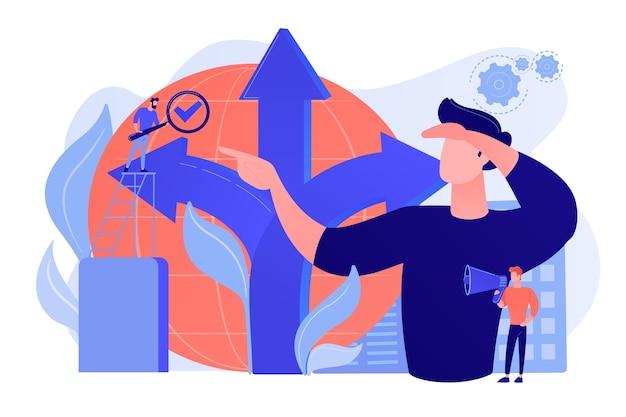Are you fascinated by how the world works? Interested in exploring the intricacies of decision making and problem-solving processes? Look no further! In this blog post, we will delve into one of the most captivating aspects of human behavior: how culture influences our decision-making and problem-solving skills.
Culture, often described as the shared customs, beliefs, and values of a particular group, plays a significant role in shaping the way we think and act. It serves as a lens through which we perceive the world and make choices that impact our lives, as well as those around us. From career decisions to language learning, culture’s influence is pervasive.
So, if you’ve ever wondered how your cultural background affects your problem-solving abilities or how it influences the decisions you make in life, stay tuned. In this post, we’ll explore various factors – from religion to language – that shape our decision-making processes and shed light on the intricate relationship between culture and problem-solving. Let’s embark on this fascinating journey of cultural influence together!
How does culture shape our decision making and problem solving
Understanding how culture influences decision making and problem solving can unveil the various ways in which our upbringing and environment can shape our choices. The cultural lens through which we view the world affects our values, beliefs, and norms, which ultimately impact the decisions we make in life. Let’s explore how culture can be both a guide and a hindrance in our decision-making processes.
1. Cultural Values: Where Decisions Spring from
The Cultural Kaleidoscope
Culture acts like a kaleidoscope, giving each society its unique blend of values, attitudes, and priorities. These cultural values serve as frameworks that shape decision making. For instance, in some cultures, individualism takes center stage, emphasizing personal freedom and autonomy. In contrast, collectivist cultures place a higher value on harmony, group cohesion, and cooperation in decision making.
The Silent Influencer
Culture affects our decision making at a subconscious level. We often don’t realize how deeply ingrained cultural values are until we encounter individuals from different backgrounds. These values influence our problem-solving techniques, risk tolerance, and even the weight we assign to different factors when making choices.
2. Perception: The Cultural Lens We Wear
The Art of Perspective
Culture affects our perception of what constitutes a problem and the way we perceive its severity. What may seem like a minor inconvenience in one culture could be viewed as a grave issue in another. These different perceptions shape the approaches we take when problem-solving.
The Elephant in the Room
Cultural biases and stereotypes can hinder our problem-solving abilities, as they limit our perspective and prevent us from considering innovative solutions. Awareness of our cultural lens and actively challenging our biases is key to overcoming these hurdles and fostering creative problem-solving.
3. Decision-Making Styles: East Meets West
The Melting Pot Blues
Cultural differences in decision-making styles can lead to misunderstandings and friction, especially in diverse workplaces. Polychronic cultures, where multiple tasks are tackled simultaneously, might clash with linear, time-oriented monochronic cultures. Awareness and acceptance of diverse decision-making styles can foster collaboration and synergy.
Verbal Judo
Language is deeply intertwined with culture, and our language choices reflect our cultural upbringing. Direct communication styles may prevail in cultures where open disagreement is valued, while indirect approaches are favored in cultures that prioritize harmony. Being aware of these communication styles can smoothen decision-making processes and avoid misunderstandings.
4. Cultural Intelligence: Embracing the Blend
Rainbow Thinking
Developing cultural intelligence can enhance our decision-making and problem-solving skills. By embracing different cultural perspectives, we expose ourselves to a vast array of ideas, solutions, and approaches. This cultural flexibility allows us to tap into the strengths of multiple cultures and blend them into innovative strategies.
The Melting Pot Becomes a Salad Bowl
Creating a multicultural and inclusive environment fosters an exchange of ideas, encouraging diverse perspectives that lead to stronger decisions. Organizations that value cultural diversity and actively promote inclusivity are better equipped to solve complex problems by leveraging the unique perspectives of their employees.
As we navigate the diverse and ever-changing world around us, recognizing the influence of culture on decision making and problem solving is crucial. By embracing a mindful and inclusive approach, we can harness the power of diversity to make better choices and find more holistic solutions. So let’s celebrate the rich tapestry of cultures influencing our decision-making processes and solve problems together, one cultural kaleidoscope at a time!
FAQ: How Does Culture Influence Decision Making and Problem Solving
Which factors impact your career growth
When it comes to shaping your career, several factors come into play. Some of the key influencers include your education, skills, experience, network, and of course, your cultural background. Culture adds a unique dimension to decision making and problem solving that can significantly impact your career trajectory. Let’s dive deeper into the ways culture influences these important aspects.
How does culture sway decision making and problem solving
Culture molds our beliefs, values, and norms, which in turn shape our decision making and problem solving approaches. It influences how we perceive and interpret information, our attitudes towards risk, our preferred communication style, and even our tolerance for ambiguity. For example, in some cultures, a consensus-based decision-making process is favored, while in others, a more authoritative approach is preferred.
How does religion impact culture
Religion holds a special place within culture, exerting a powerful influence on various aspects of life. It impacts cultural values, customs, rituals, and even the way societies organize themselves. As decision making and problem solving are inherently intertwined with culture, religion inevitably plays a role in shaping these processes. Religious beliefs can guide individuals’ moral compass, affecting the choices they make and the solutions they seek.
Which factor holds the most sway in determining climate
Now, unless we’re talking about weather patterns and not decision making and problem solving, it’s not about determining climate! But if you’re asking about the most influential factor in shaping culture, history takes the crown. History shapes cultural identities, traditions, and collective memories that influence how we approach decision making and tackle problems. So, history forms the bedrock upon which culture is built.
How are language and culture intertwined
Language and culture share an intricate bond, working in tandem to shape our perceptions and communication styles. Language shapes culture by carrying the collective wisdom, values, and ideologies of a society. At the same time, culture shapes language, introducing unique expressions, idioms, and cultural references. Our decision making and problem solving are inherently influenced by the cultural nuances embedded within the language we use.
Does culture influence decision making and plans for the future
Absolutely! Culture plays a significant role in determining how we make decisions and plan for our future. Cultural norms, expectations, and values can guide our choices about education, careers, family, and personal aspirations. For instance, in some cultures, filial piety and maintaining family harmony may take precedence over personal ambitions when making long-term plans.
How does culture impact language
Culture and language are deeply intertwined, each shaping and reflecting the other. Culture influences the vocabulary, grammar, idiomatic expressions, and even the politeness levels within a language. Cultural nuances are embedded in language, influencing how we communicate, perceive information, and resolve problems. So, when it comes to decision making and problem solving, culture influences not only the content but also the manner in which we express ourselves.
What factors influence English language proficiency
Improving English proficiency is influenced by various factors, including exposure to the language, educational opportunities, language programs, motivation, and cultural context. Cultural influences can impact language learning by affecting students’ confidence levels, their preferred communication style, and even the importance they place on mastering a foreign language like English.
What influences most students’ career decisions
While personal aspirations and interests play a crucial role in students’ career decisions, the influence of culture cannot be overlooked. Cultural expectations, social norms, and parental pressure often shape the career path chosen by students. In some cultures, certain professions may be highly valued, leading students to prioritize them over their individual passion or aptitude.
How does culture shape English language learning
Culture profoundly impacts English language learning, as it influences students’ motivations, language preferences, and communication styles. Cultural differences can pose challenges in understanding the nuances of a foreign language and adjusting to different cultural norms and practices. On the flip side, cultural diversity can also enrich English language learning by providing unique perspectives and the opportunity to engage with a global community.
So, there you have it! Culture weaves its way into decision making and problem solving, influencing our choices, perspectives, and approaches. Understanding this interplay is essential for navigating the complexities of a diverse world and fostering effective communication and collaboration across cultures.
Remember, culture isn’t just something on the side; it’s an integral part of who we are and how we tackle the challenges that come our way. Embrace your cultural influences, have a laugh, and make informed decisions while problem-solving — it’s all part of the beautiful tapestry of life.
Now, go forth and let culture be the compass that guides your decision-making journey!

